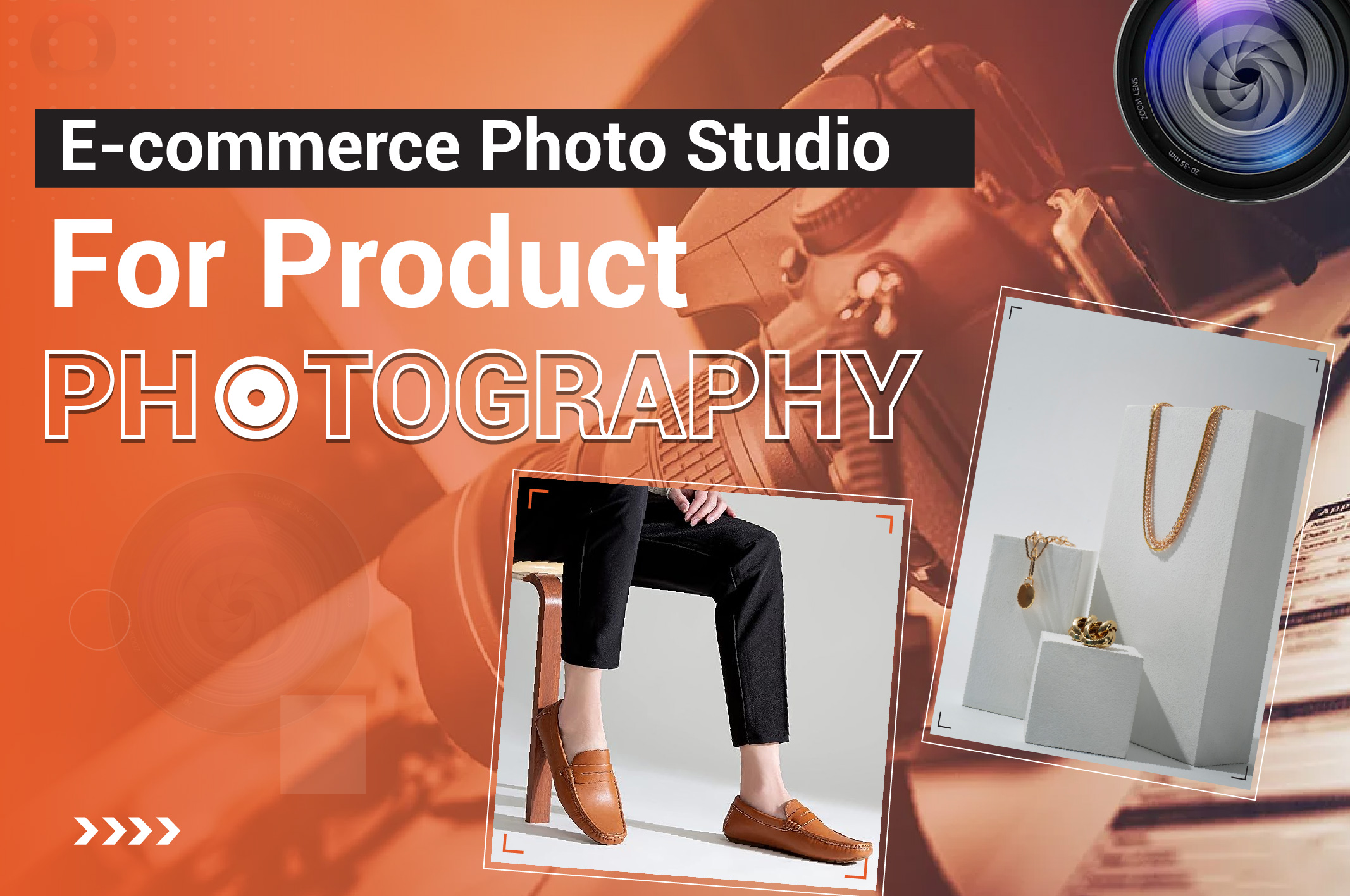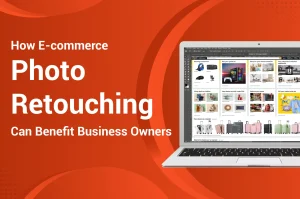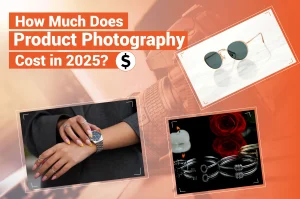Did you know more than 80% of online buyers rely on high-quality product photos while making their purchase decisions? Having stunning visuals is as important as the product itself in today’s digital world, where almost everything is online. This is where the role of a photo studio comes into play. Let’s discover how e-commerce photo studio can help sellers with product photography and why online sellers highly rely on these studios for marketing materials.
What is E-commerce Photography?
E-commerce photography is the process of taking photos of products that we sell online. Here, the objective is to take high-quality product photos to present the product accurately so that the buyers can make an informed decision.
Types of e-commerce photography
Online retailers present their products in different styles and compositions, considering the type of the product and the taste of the target customers. Therefore, e-commerce photography can be of different types.
White background photography
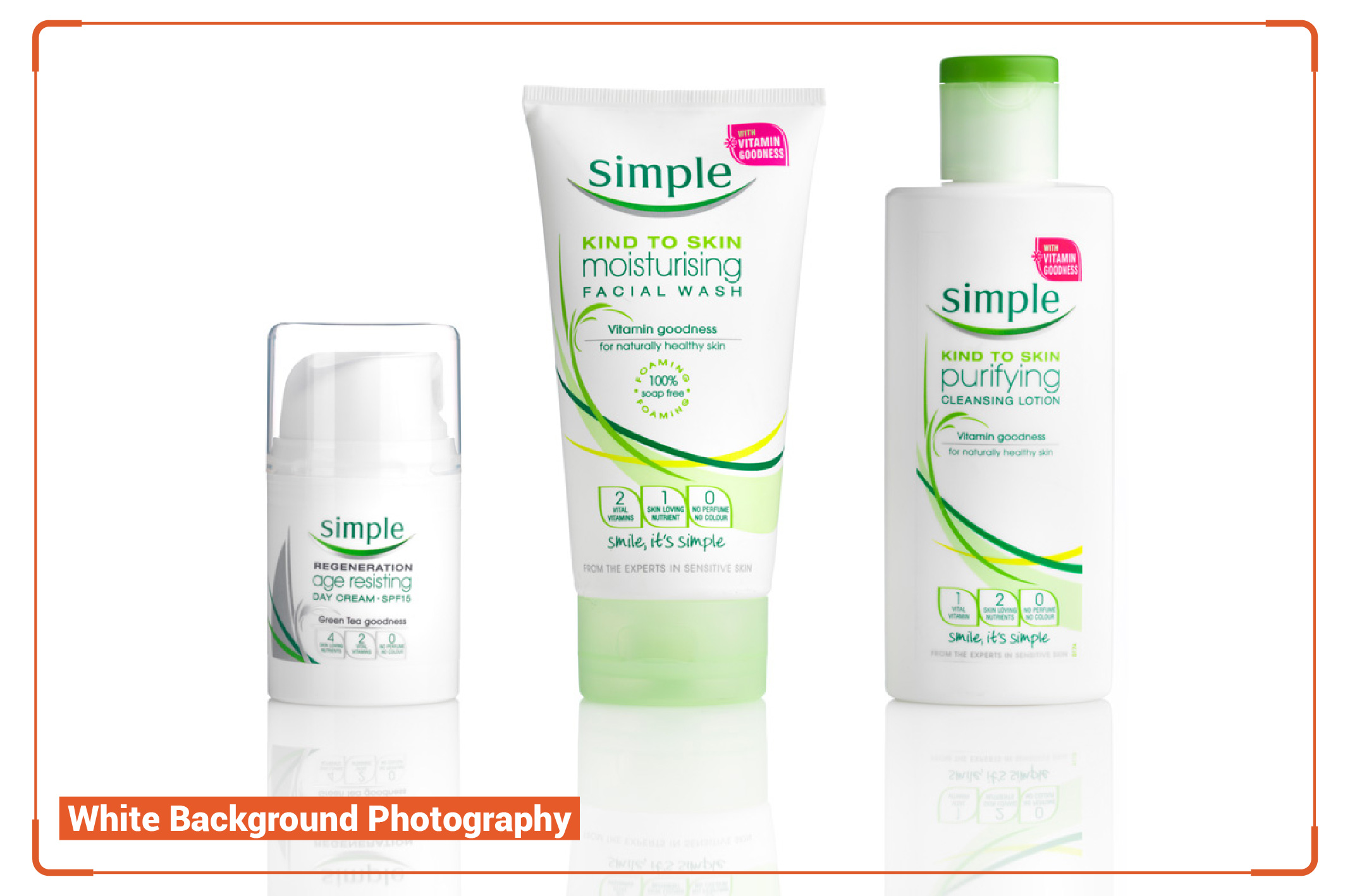
Here, the product is displayed against a pure white background which creates an undistracted presentation of the subject. While is preferred as a background for many reasons. For example, it is a soothing color for the eyes yet it creates high contrast against most of the colors making the product prominent.
Group shot
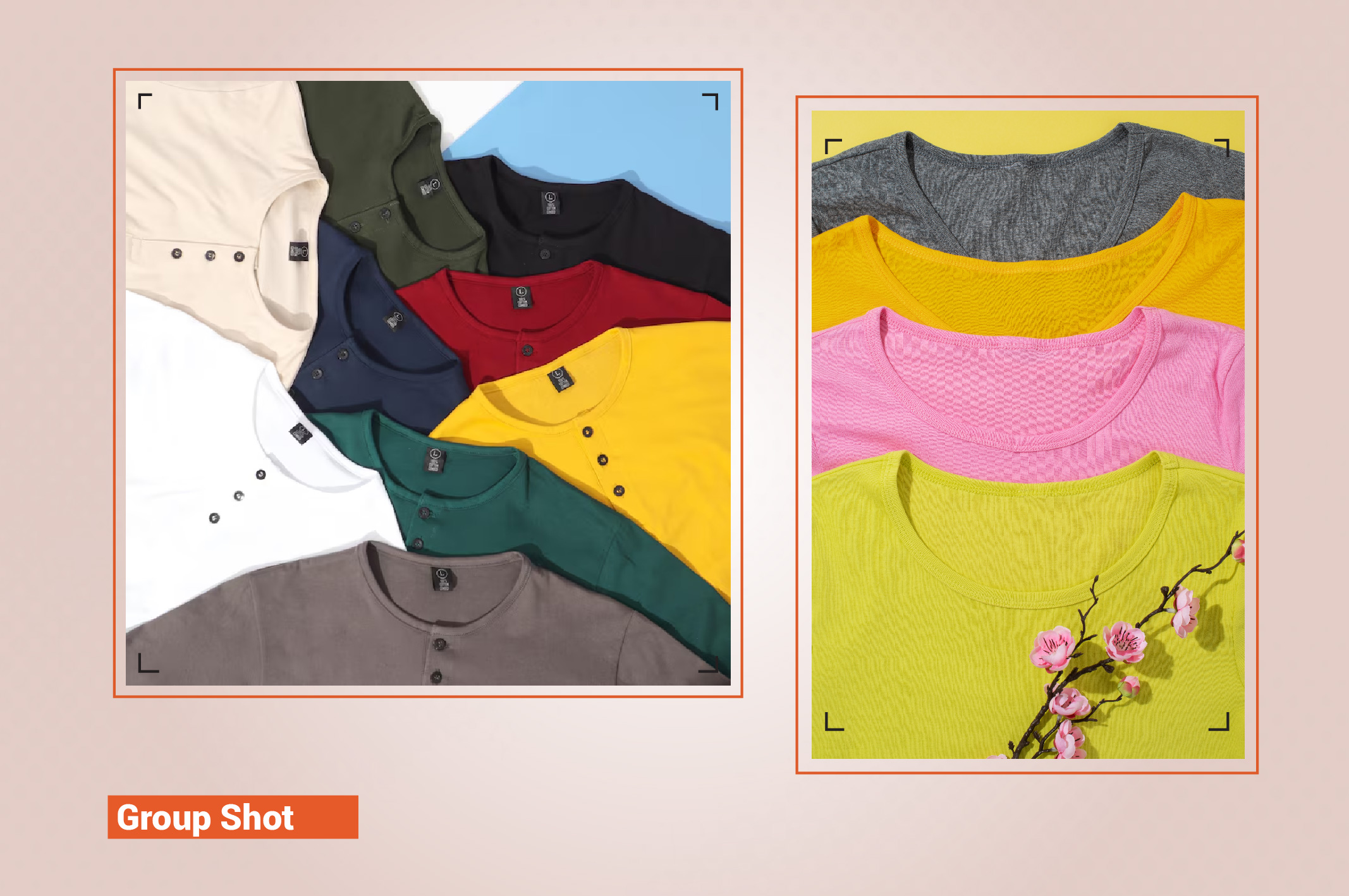
Photographers take different variants of e-commerce products to capture them in groups. Products with different colors and sizes can be captured in this style. Sellers may also take photos of different product categories in a single frame to establish the brand.
Close-up or macro

Macro is a special type of photography where a specific feature or part of the product is highlighted. Here, photographers use a special lens to take ultra-close-up shots to give a more detailed view of the product. This is a commonly used technique to present the texture of the fabric of clothing items.
Packaging shots

Packaging material and its design are often equally or more important than the product itself. In such cases, taking photos of the product’s packaging becomes mandatory. For example, an expensive diamond ring can be captured with its sophisticatedly designed box to present luxury.
Lifestyle photography

Photographers relate the customer closely to the product by taking the photo in a real-life situation. For example, a fitness watch can be used while a person is actually exercising.
Flat lay
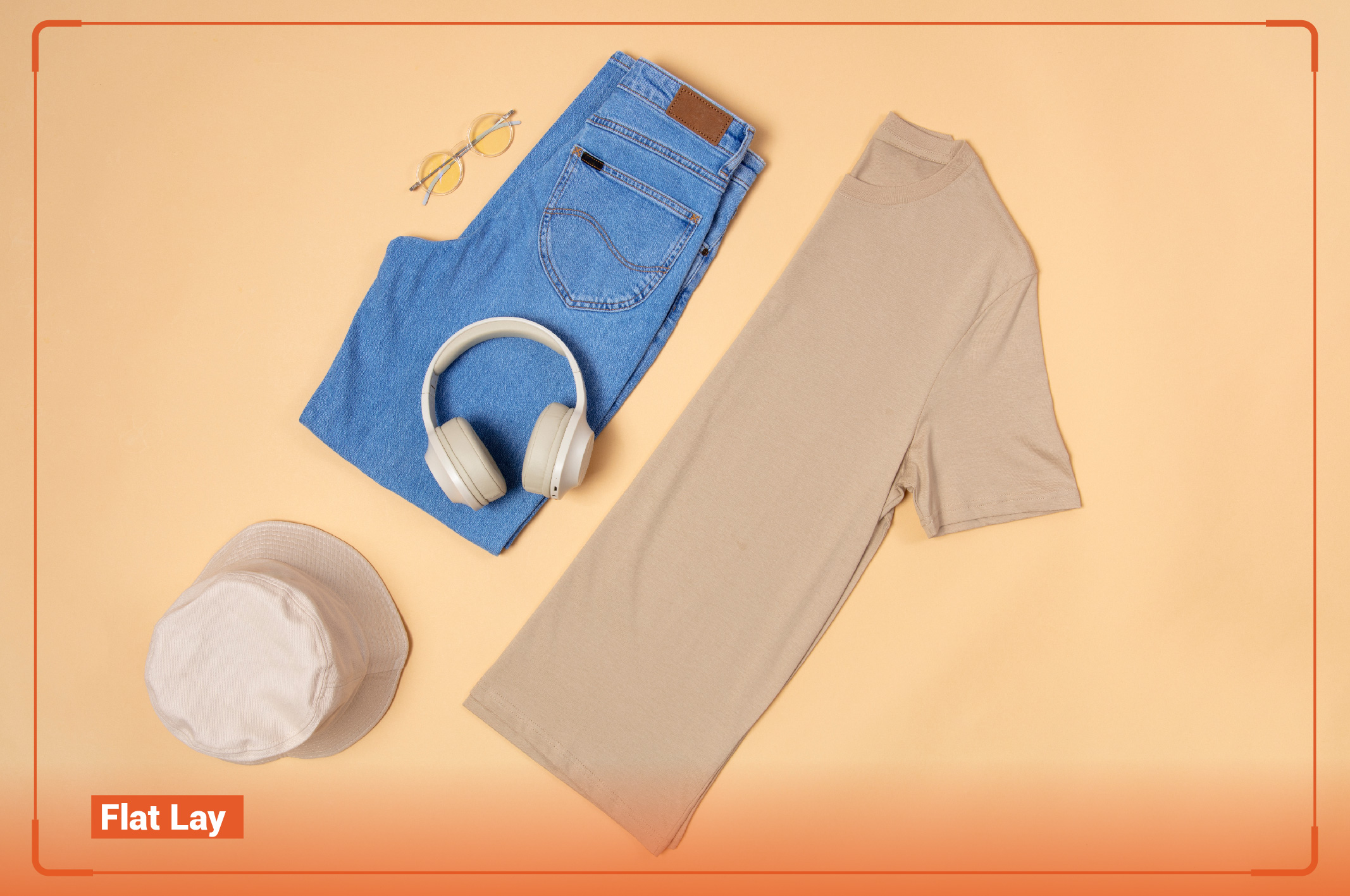
In this type of e-commerce photography, products are laid on a flat table and captured from above. This is a great way of taking product photos in groups, with props, or creating interesting photo compositions.
Product in use

To present the context, photographers often capture a product when they are in use. For example, cookware products can be captured when someone is actually cooking with them.
Importance of e-commerce photography
Today’s digital world is dependent on visual content. Hence, high-quality product photos have become synonymous with the success of an online business. Below are a few reasons why e-commerce product photos are important:
- Attractive product photos can experience about 100% or more conversion rates compared to ordinary ones.
- Products with 360-degree photos will experience at least 20% more conversion compared to products with regular photos.
- 20% of all the returns are caused by the unrealistic presentation of the product.
- More than 50% of online shoppers think that high-quality product photos are more important than product descriptions.
Why Choose an E-commerce Photo Studio?
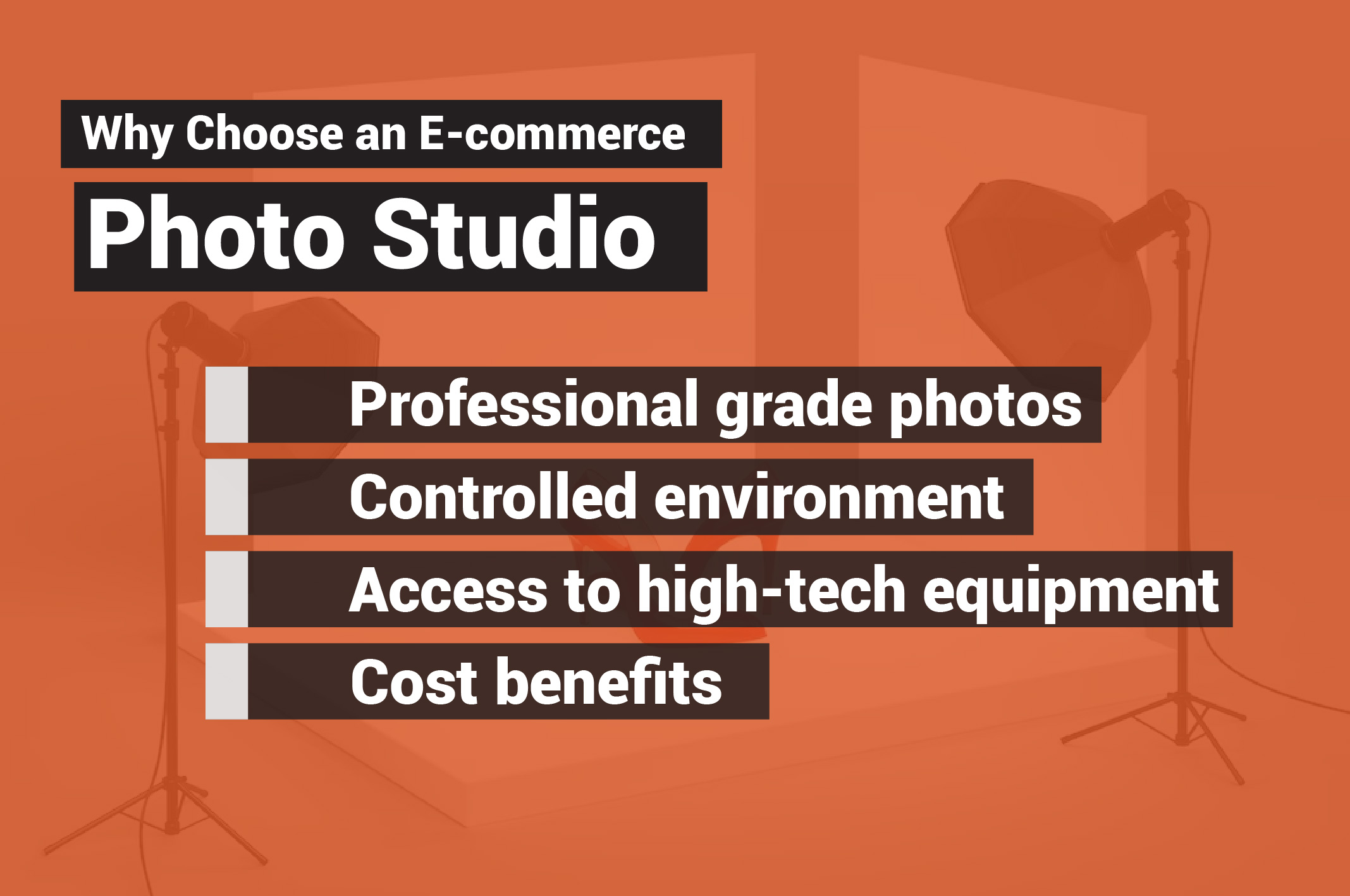
Product photography is not just taking a camera and capturing a photo randomly. The process involves systematic planning, E-commerce photo studio set up, product preparation, shooting, post-production, etc. That is where the role of a photo studio comes into play. Below are a few reasons why we need a photo studio for professional product photography:
You may also like to read… Ultimate Guide for Best E-commerce Product Photography
Professional-grade photos
Photo studios are run by expert photographers. They know how to take a product photo that attracts the target customers. A DIY photographer can not often apply all the shuttle best practices of product photography. For example, an e-commerce studio will apply the right background for a product, considering the color contrast. Hence, the final result becomes professional, which is crucial for a higher conversion rate.
Consistency
A photography studio will consider brand color, product color, and target audience to design the photoshoot. It will have a holistic plan for the photography, which results in consistency across all the photos of different products. For example, the background of the photos will be similar and will have the same branding elements.
Controlled environment
Studios have the required equipment and accessories to create the desired environment for the photography session. For example, they can readily change the backdrop and lighting setup, or even arrange props as per the demands of the photography. Photographers have more control over the environment, which helps them take the photos more precisely.
Access to high-tech equipment
A photo studio has almost all the equipment that is necessary to take high-quality product photos. For example, it has cameras with various specs, lenses, backdrops, advanced lighting setups, and all other required accessories. Studios can readily use any of the equipment that is appropriate for specific photography needs. Access to these accessories is not often possible for a DIY photographer.
Cost benefits
The cost of photography in a studio is inexpensive. Photo studios enjoy economies of scale which give their clients huge cost benefits as well. Although the equipment studios use is expensive, they use the same equipment for numerous clients. Therefore, the cost of investment becomes minimal. Buying all the expensive accessories is not feasible for an individual photographer.
Best Practices of E-commerce Product Photography in a Studio
Studio photography is not the same as DIY photography. It follows systematic guidelines and some best practices to make the photo look attractive and professional.
Planning before photography
Planning carries more than 50% weightage of the total photography efforts. It involves different activities such as finalizing photography ideas, location, lighting setup, etc. A photographer should plan for certain things before taking the shot:
- Defining the purpose of the photoshoot
- Designing concepts
- Finding creative inspiration
- Finalizing the right time and location
- Sharing the concept with the client
- List required accessories and crews
Getting ready with the accessories
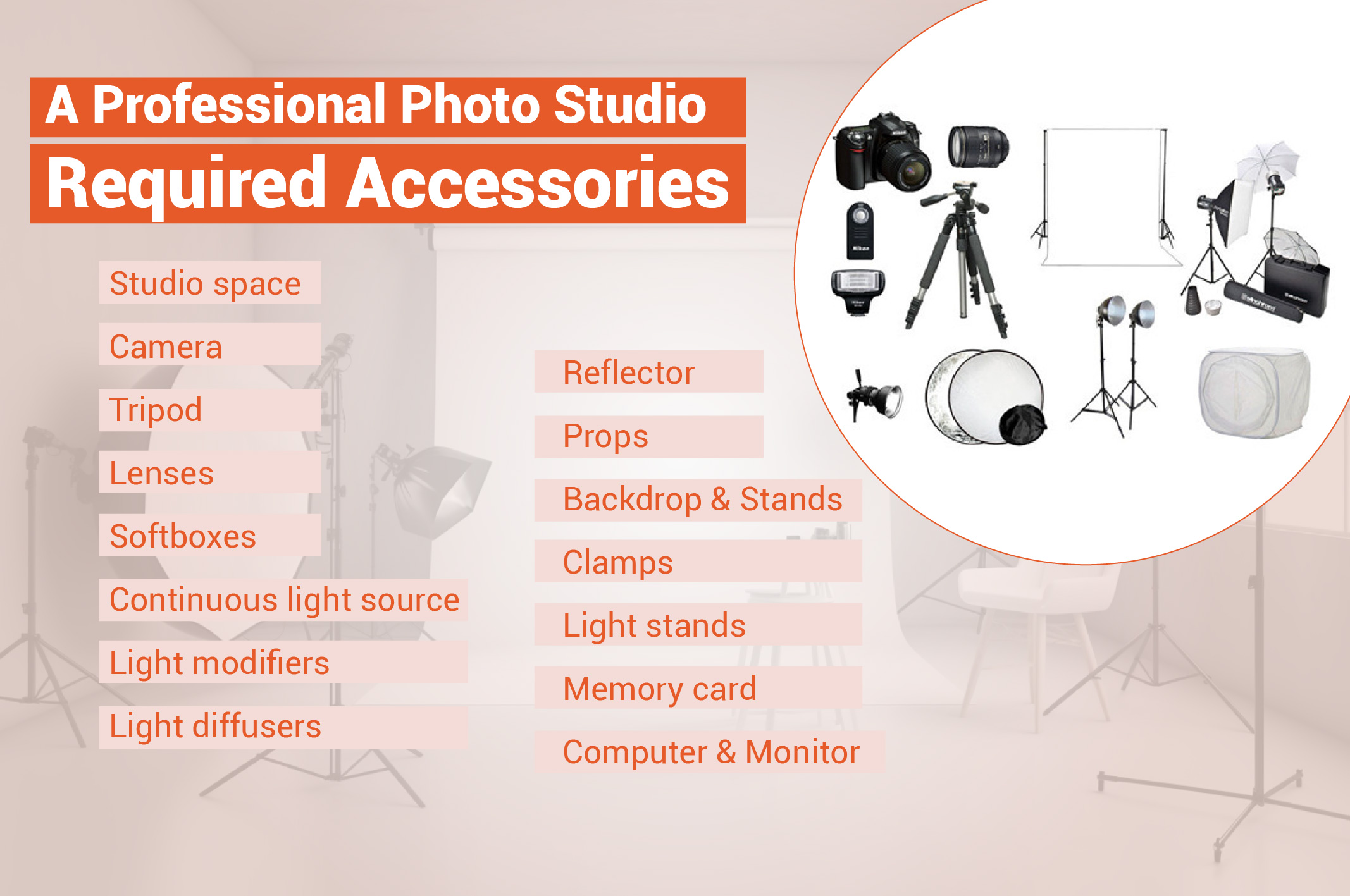
A professional photo studio will make preparations with all the required accessories before the photography. The list of essential equipment should be finalized in the planning stage. After the planning is done, the photographer will check and arrange all the accessories she needs. Below are a few common equipment that are used during product photography:
- Studio space
- Camera
- Tripod
- Lenses
- Softboxes
- Continuous light source
- Light modifiers
- Light diffusers
- Reflector
- Props
- Backdrop & Stands
- Clamps
- Light stands
- Memory card
- Computer & Monitor
Preparing the photography set
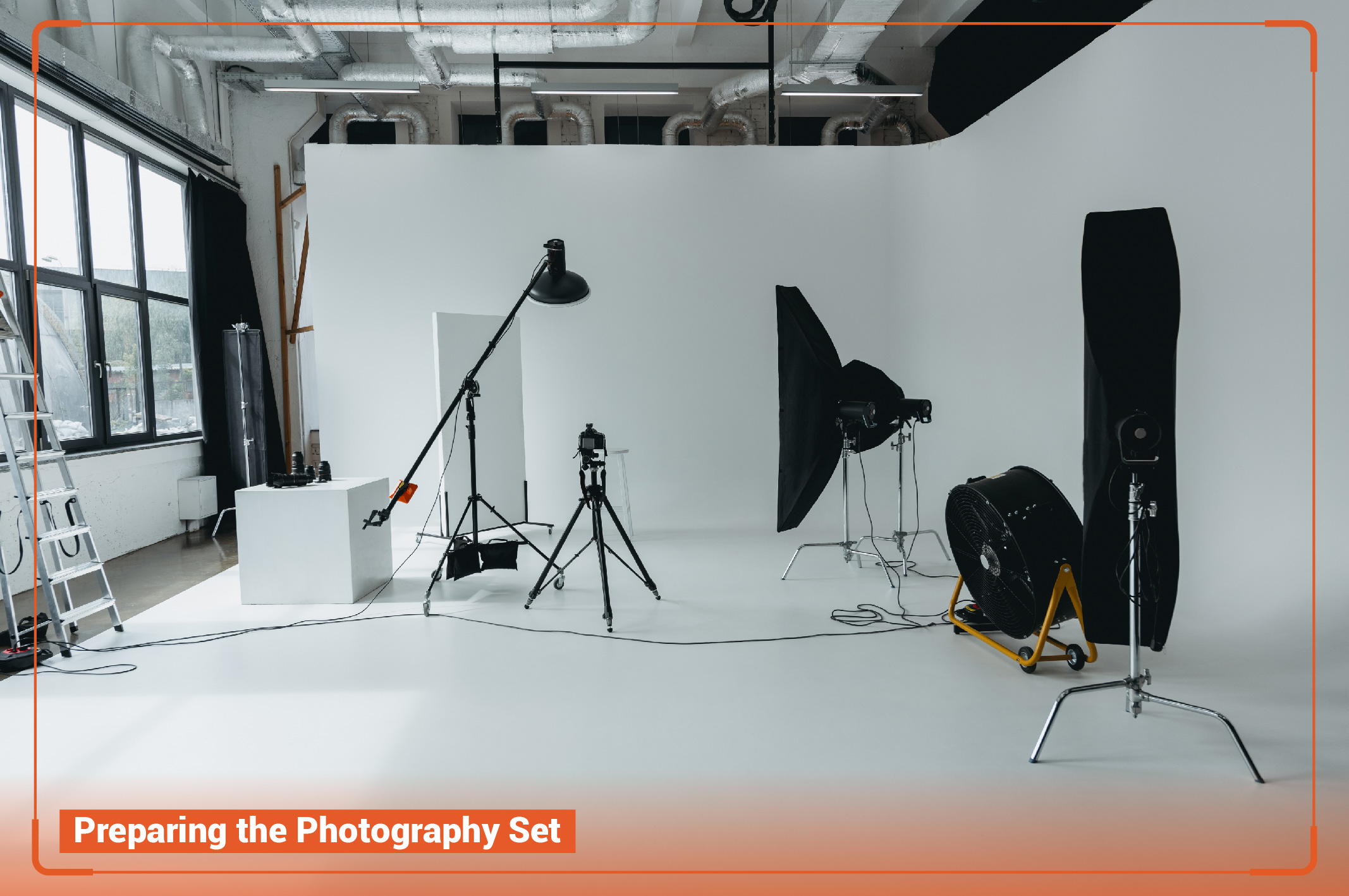
Studios will prepare the photography set as per the desired photo mood. For example, for creating a dark and moody environment, the studio will create a dark and highly contrasting lighting setup and arrange the props and background accordingly. Photographers will design the concept as per the objective of the photography and then prepare for the setup.
Choose the right background
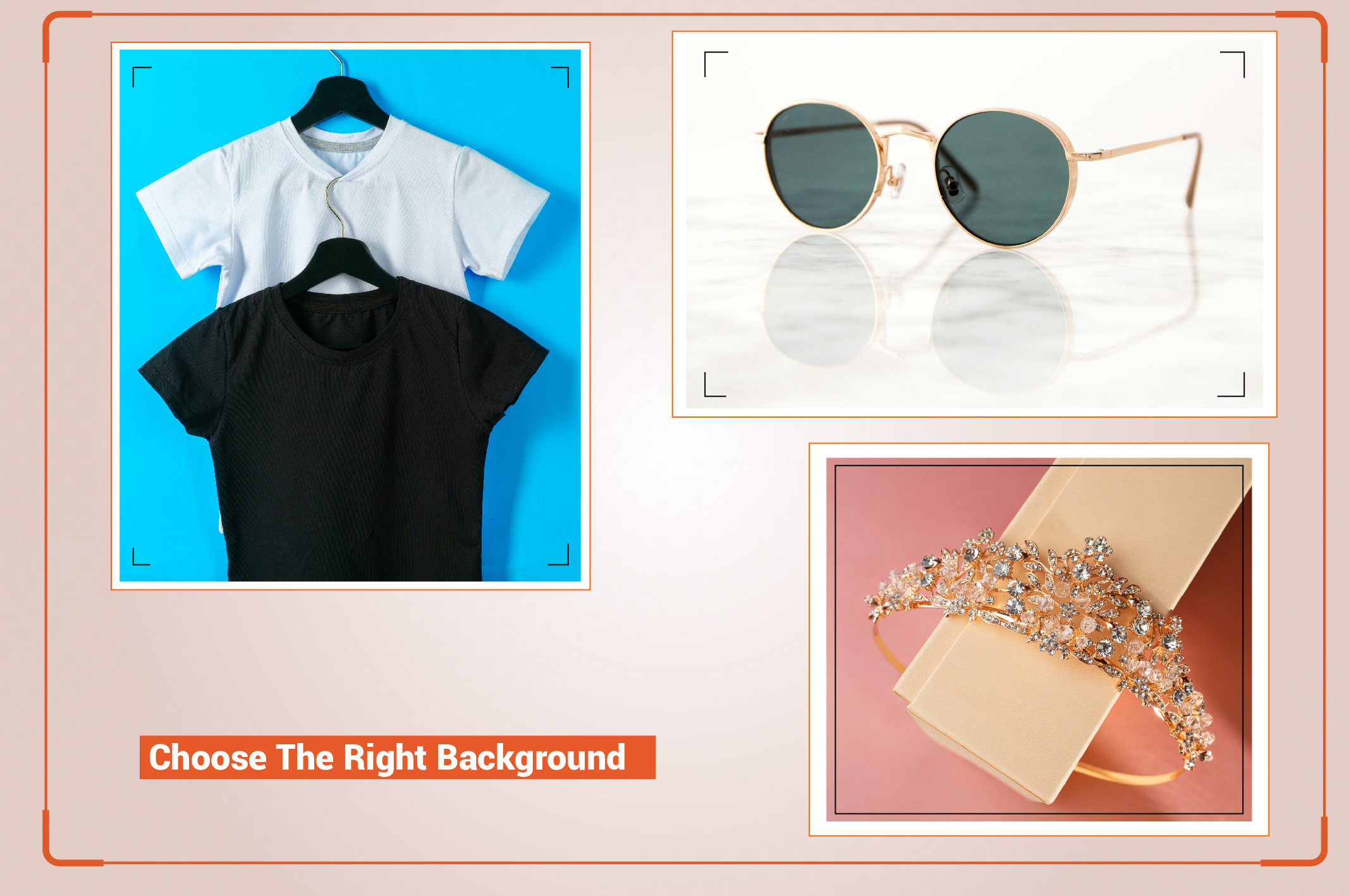
Choosing the right background is an essential job for photographers taking product photos in a studio. White and green are the two most widely used background colors. White is a neutral color which creates a clear contrast against almost any product. On the other hand, with a green background, image editors can alter the background color with ease.
You may also like to read… A Complete Guide to Editing Product Photos for a White Background
A sweep or continuous background should be used during product photography to make the photo seamless. It has to be clean and free from wrinkles.
Consider the branding elements

Incorporating branding elements is a good practice for product photography so that the customers may connect them with the brand. For example, the background color, photo color grading, and branding elements such as logo and signage can be implemented within the photo.
Testing different styles
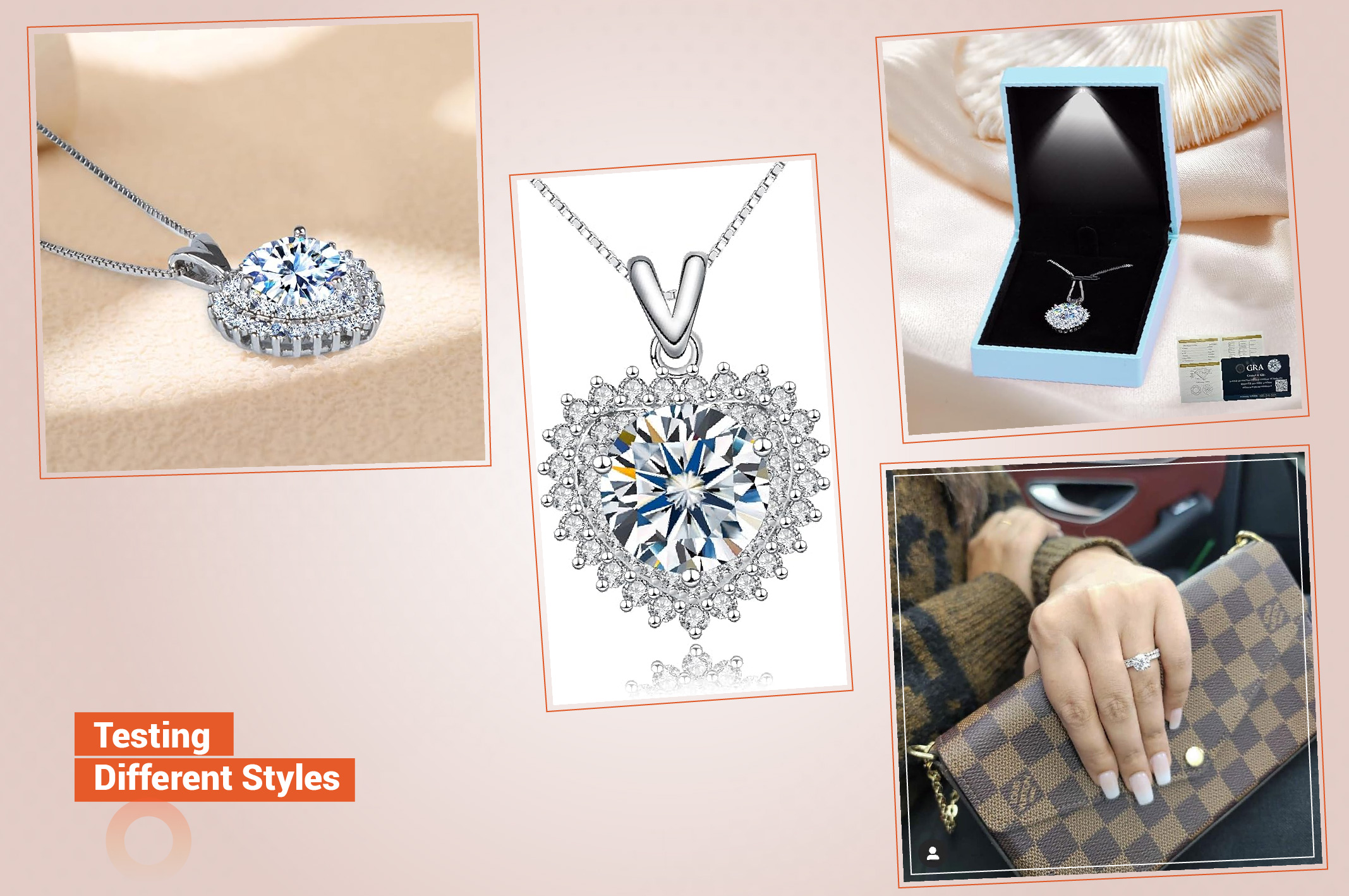
A professional product photo studio will work with different ideas for capturing a single product. For example, for jewelry photography, multiple styles can be adopted such as lifestyle, packaging shot, closeup shot, group photography, and more. Obviously, trying different photography styles will help the seller reach out to more customers.. As we prefer, different individuals have different tastes.
Capture from different angles
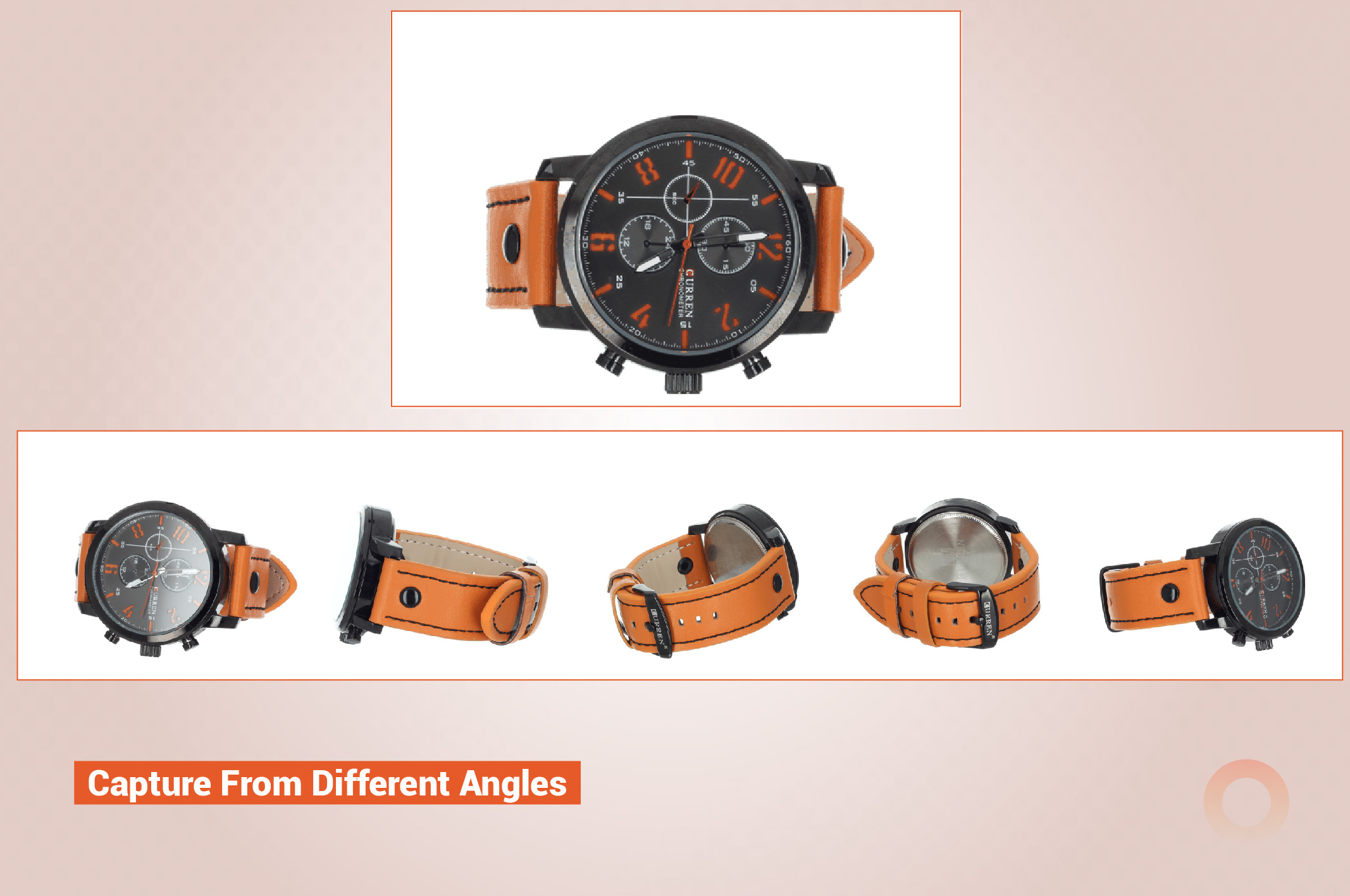
An experienced photographer will capture product photos from different angles to capture the photo from multiple perspectives. Photographers do not know which style and angle the viewers are going to like. Multiple options for a single product will give the seller abundant marketing material that she needs to use on different social media and e-commerce platforms.
Edit the photo before submission
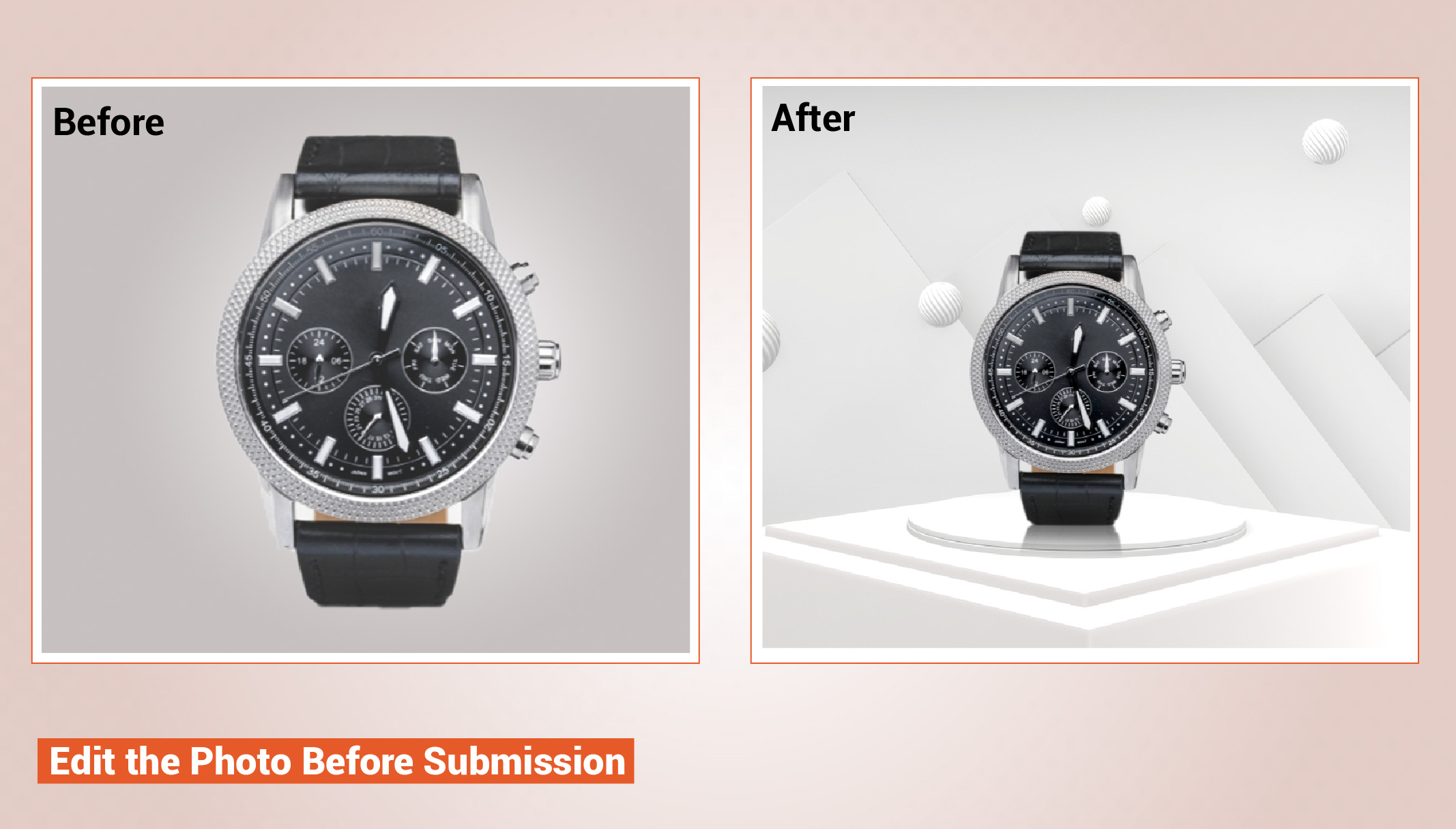
Editing photos is a mandatory practice for studios. Before submitting the photos to the clients, the color, lights, exposure, tone, and other aspects need to be balanced. Additionally, the background, photo composition, and image manipulation may also be necessary. To make the photo compliant with e-commerce platforms like Amazon, clients may also ask for different services such as cropping and resizing.
How does E-commerce Photo Studio align with photo editing services?
As we mentioned earlier, image editing is mandatory for the perfect and professional presentation of the product. How do studios utilize advanced photo editing tools and techniques? We will discuss this in the section.
In-house image editing
Photo editing is not the core competence of a studio. Hiring and managing in-house image editors is not cost-effective for smaller volumes of work. Below are the pros and cons of studios with their own image editors:
👍Better communication with the editors
👍Full control over the team
👍Instant feedback exchange
👍Deeper understanding of the photography needs
👍Can meet urgent requirements
👎Higher investment
👎More fixed costs such as salaries & benefits
👎Less creativity
👎Less scalability
Outsourcing image editing services
Hiring professional image editing companies is a more popular option for most studios. These companies have expert image editors serving clients across the globe. Below are a few pros and cons of outsourcing image editing:
👍Substantial cost reduction
👍Access to highly experienced editors
👍More creative and quality results
👍Advanced tools and technologies
👍Studios get busy with their core job
👎Less control over editing work
👎Timezone barrier
👎Less efficient communication
👎Challenges to meet urgent deadlines
Why is post-production a crucial part of product photography?
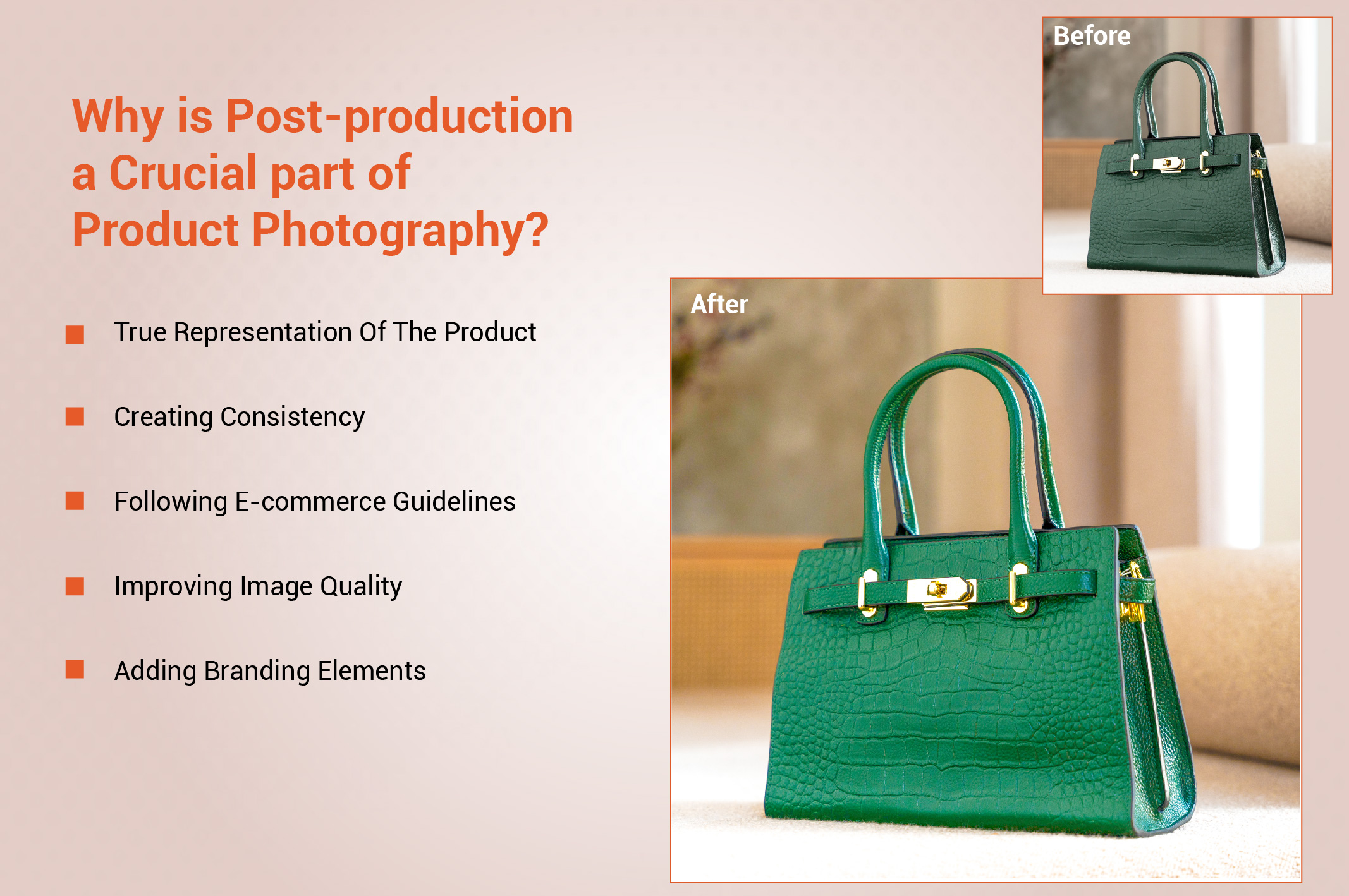
Whether they are taken in a professional studio or by an individual photographer, product photos must be edited before their commercial use. Below are the reasons why post-processing is important:
True representation of the product
Product photos need to look realistic. They should represent the product correctly so that the customers can make an informed decision without any confusion. Misrepresentation will create confusion and result in returns. It is the job of the image editor to correct the color and other aspects of the photo to make it a true representative of the product.
Creating consistency
Consistency is the key to branding. All the product photos need to be consistent across all platforms so that customers can recall the brand. For example, the background color should be similar to create uniformity. Professional image editors do this job by adjusting or manipulating the necessary image elements.
Following e-commerce guidelines
E-commerce platforms such as Amazon have their specific image guidelines that the sellers must follow. For example, the size of the primary image of Amazon is 1000px X 1000px. Therefore, sellers need to crop and resize their product photos before uploading their items on this platform. Apart from cropping, many other aspects need to be adjusted if you want to sell online.
You may also like to read… Best Size for E-Commerce Product Images
Improving image quality
Photographers can not always take photos in the best conditions. For example, they often take photos in low light conditions keeping the ISO minimum to avoid noise. The exposure of these photos can be corrected in the post-production. Apart from exposure, image editors correct other photo aspects such as color, tone, shadow, etc to make the photo look attractive yet authentic.
Adding branding elements
Sellers may want to add branding elements to the product photo. For example, the logo, sign or color pattern can incorporate with the photos to create a branding style. Image editors do this job in the post-production table, maintaining the guidelines of the seller.
Examples of e-commerce product photo studio
Let’s explore a few good examples of e-commerce studios around the world.
VSP Studios

VSP Studios is based in Miami, USA. The studio specializes in e-commerce fashion items. They offer a wide range of photography services such as model, lifestyle, ghost mannequin, flat lay, and product photography. Additionally, they offer video-making services for apparel products. The studio also provides all the necessary image editing works necessary to make the photo ready to upload.
Squareshot
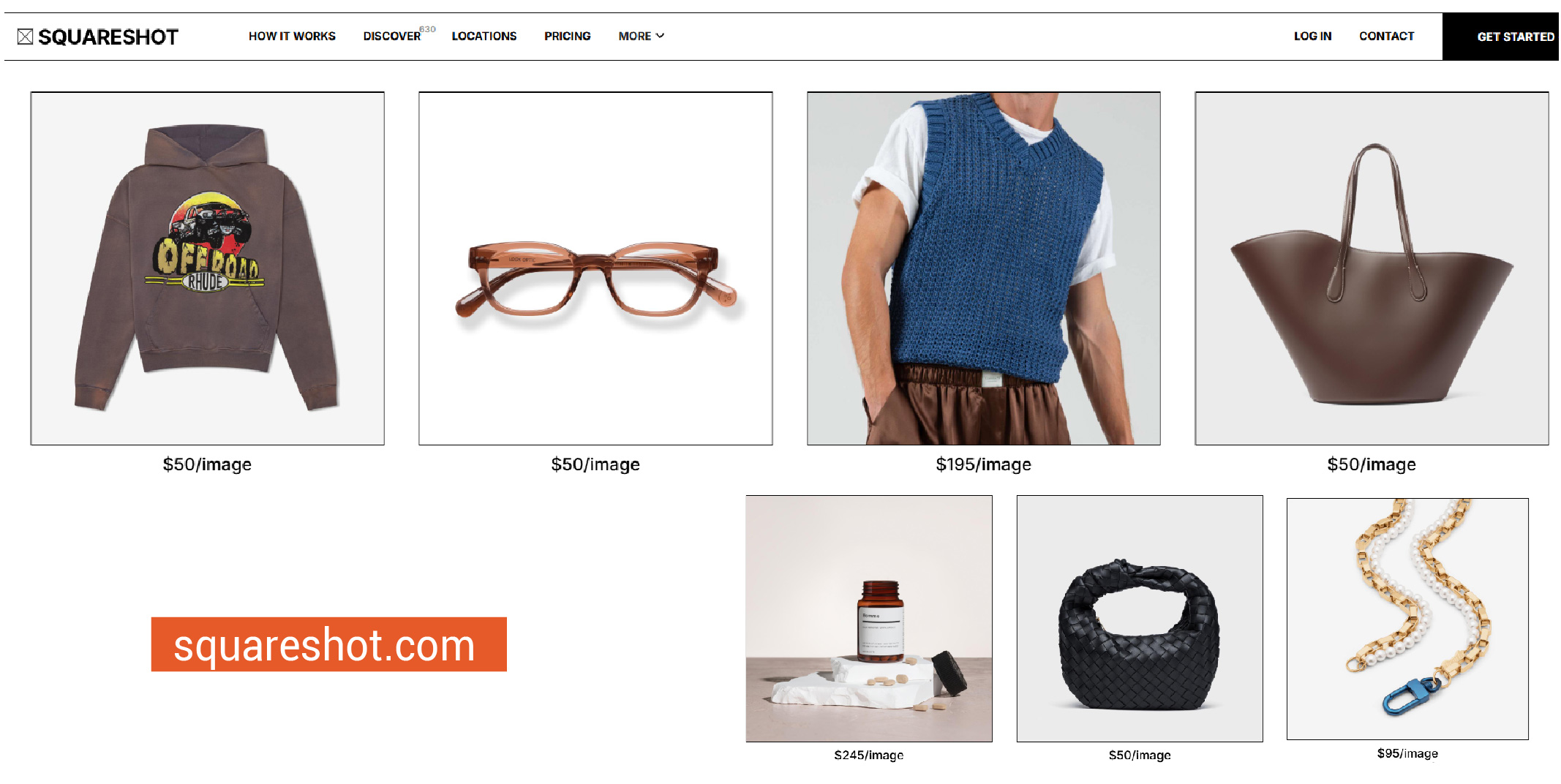
Squareshot is based in the USA, having its setup in multiple locations. They specialize in any type of product photograph,y such as clothing, beauty, accessories, beauty, bags, jewelry, and more. As well as providing model photography services and they have four easy working processes. The studio offers a dashboard to its clients from which the clients can manage and monitor their projects.
Sootify
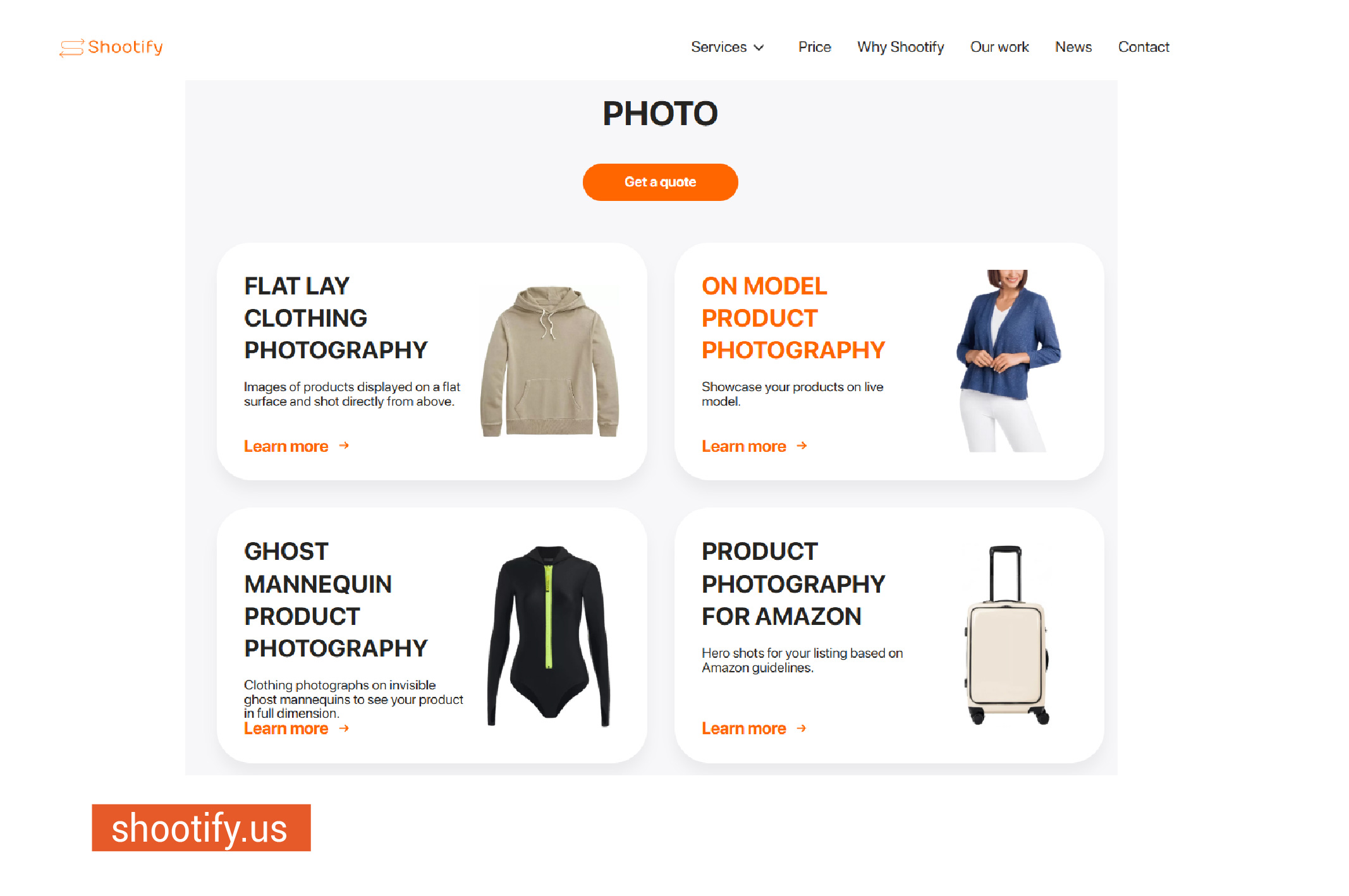
Sootify is a USA-based product photography studio specializing in fashion, footwear, clothing, and beauty products. They are also good at taking 360-degree photos. The studio has its setup in Miami and Florida. However, they provide remote services. Whatever your location is, you need to send the product to the team and they’ll take the photo according to your instructions.
Product Photography
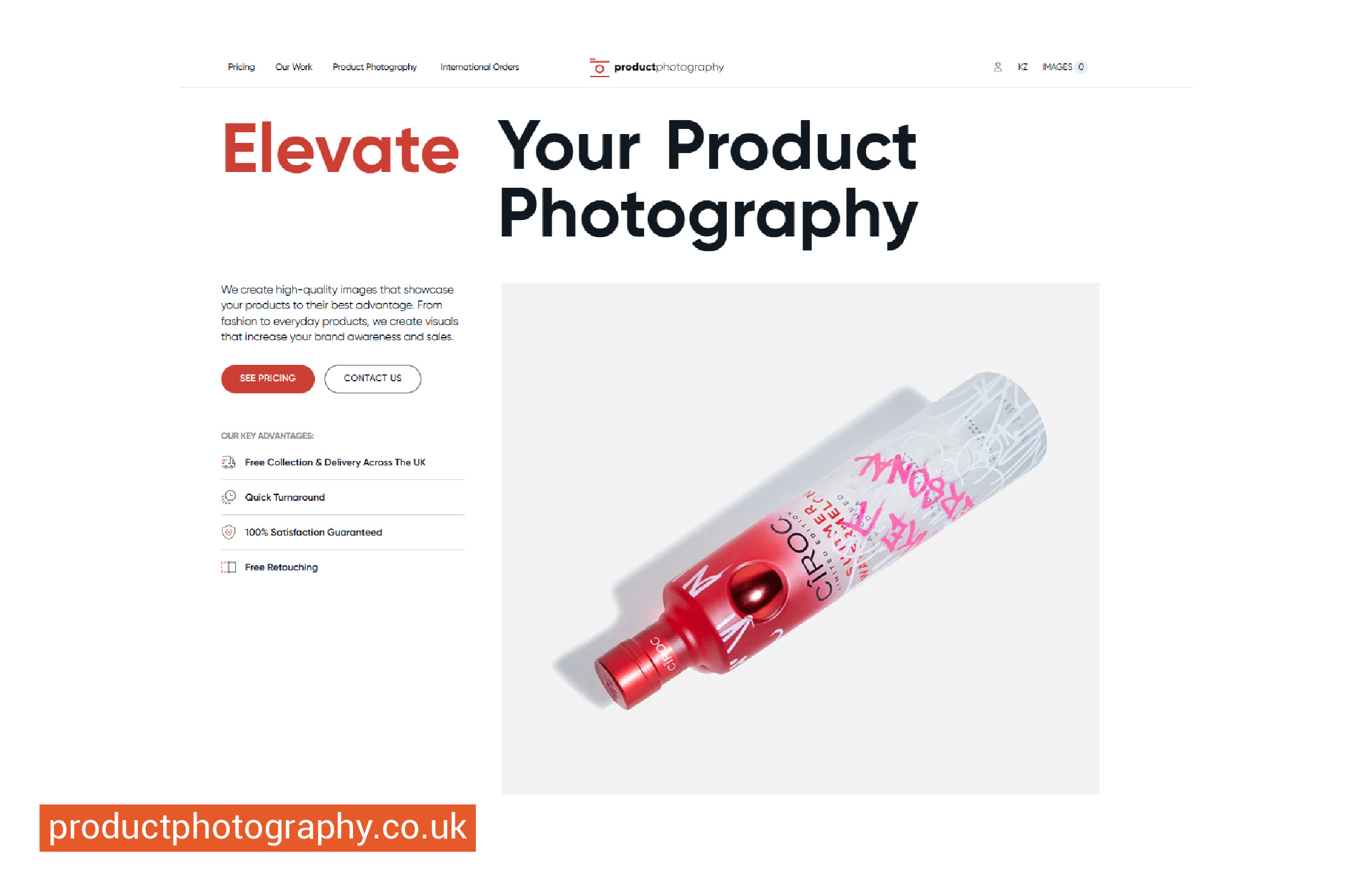
Product Photography is a UK-based e-commerce studio. They specialize in packshot, beauty, jewelry, Amazon, homeware, fashion, and large furniture photography. Generally, the studio offers a free product collection across the UK and provides free photo retouching. This can be a great place to take product photos for retailers located in the United Kingdom.
Luxstudios

Luxstudios is a renowned product photography studio in London, UK. It specializes in still life, cosmetics, food & drink, and lifestyle photography. The studio has a large team of experienced photographers. Moreover, they provide the editing services with their in-house editors. It provides both wet and dry hire services where the clients have options to utilize different pre-production and post-production services.
FAQ
-
What is the purpose of an e-commerce product photo studio?
The primary objective of an e-commerce photo studio is to give the sellers and the photographers a perfect arrangement for capturing attractive product photos. It makes the life of the photographer easy as she does not need to gather the accessories and other necessary equipment by herself.
-
What equipment is needed for a photo studio?
A dedicated space for photography is the prime requirement of a photo studio. Additionally, it needs all basic photography accessories such as a camera, lighting equipment, lenses, backdrops, stands, props, and more.
-
Can DIY product photography serve the purpose?
If you are a small retailer, then budget might be a concern. For such instances, DIY photography for a few pieces of products will work if you follow the basic techniques of product photography. You can even take photos with a smartphone.
-
Why do studios require photo editing before submitting their work?
Photographers need to edit photos to meet the client’s requirements and to make the photo polished and refined. Eventually, they can not take the photos in the best conditions. Therefore, editing becomes necessary before work submission.
-
In-house or outsourced, which type of photo editing is better for studios?
Outsourcing photo editing services is by far a better option. It will save money for the studios and keep them focused on their core job.
Conclusion
E-commerce photo studio is doing a great job in the background for online sellers. Whatever the product is, retailers are relying on studios to take their brand to the new height. Studios use the right equipment, professional photographers, and the right photo editors to present the product at its best look. Hence, the success of online selling depends on the combined effort of the photographer, studio, and expert image editors.

